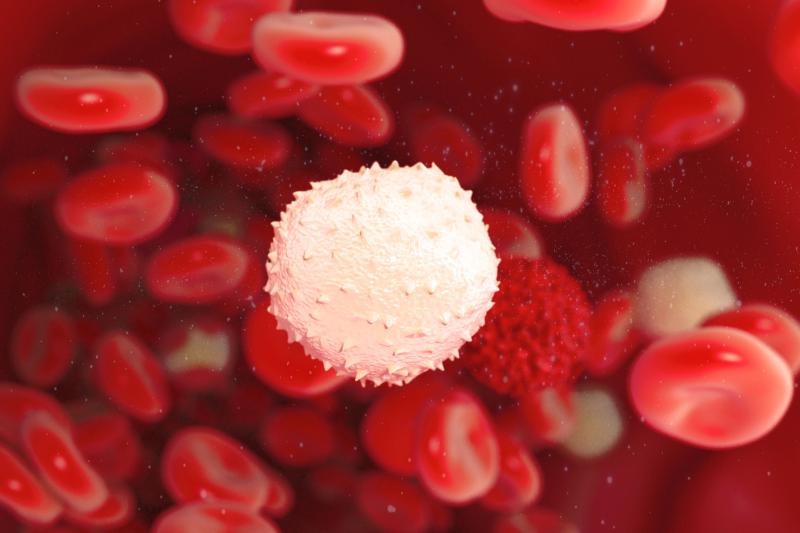
Liquid biopsy may facilitate detection and serial monitoring of multidrug resistance (MDR) in multiple myeloma by analysing multiparticles (MPs) in blood samples of patients, with a recent study showing that MDR markers are found on MPs of stem-cell-like origin.
“One of the most important mechanisms by which cancers acquire MDR is through the overexpression of resistance proteins, belonging to the ATP class of drug transporters, including P-glycoprotein (P-gp). These are plasma membrane drug efflux transporters that mediate the removal of chemotherapeutics from the cancer cell plasma membrane,” researchers said. [Int J Mol Sci 2017;18:2362]
“We discovered that cancer-derived MPs confer the transfer and spread of MDR within cancer cell populations through the intercellular transfer of functional resistance proteins and nucleic acids packaged within the vesicular cargo,” they added. [Pharmacol Res 2013;76:77-83; Mol Cancer 2012;11:37; Leukemia 2009;23:1643-1649]
In the current study, the researchers immunophenotyped MPs (or circulating large extracellular vesicles) isolated from patients for the presence of four protein biomarkers useful for monitoring MDR development, disease burden and disease progression in multiple myeloma. These biomarkers were the MDR protein P-gp, the plasma-cell marker CD138, the stem-cell marker CD34, and the MP marker and mediator of cancer spread phosphatidylserine (PS).
Three markers (P-gp, CD138, PS) were evaluated independently in 74 patients, among whom 42 were treatment responsive (partial remission, n=30; complete remission, n=12), 14 had de novo disease and 18 had a relapse. The complete signature comprising four markers (P-gp, CD138, PS, CD34) was assessed in 11 patients.
Results revealed that elevated levels of P-gp+ and PS+ MPs were associated with disease progression and treatment unresponsiveness. P-gp, PS and CD34 proteins were predominantly expressed in CD138− MPs in advanced disease. Of note, a dual-positive (CD138−P-gp+CD34+) MP was elevated in aggressive/unresponsive disease. [Blood Cancer J 2020;10:37]
“In conclusion, MPs provide a surrogate marker of their cells of origin, which in the case of myeloma are predominantly confined to the bone marrow… Our results indicate the presence of markers of MDR on MPs of stem-cell-like origin. Stem cells are a reservoir of P-gp-positive cells, the levels of which appear to correspond to disease progression,” the researchers pointed out.
Minimally invasive personalized liquid biopsy accounts for tumour heterogeneity characteristic of multisite tumour infiltrates, can detect the presence of MDR during routine follow-up, and allows for simultaneous analysis of disease burden, according to the researchers.
The test may be used as a complement to existing gold standard tests, supporting clinical staging criteria and streamlining easily into existing hospital workflows, they added.